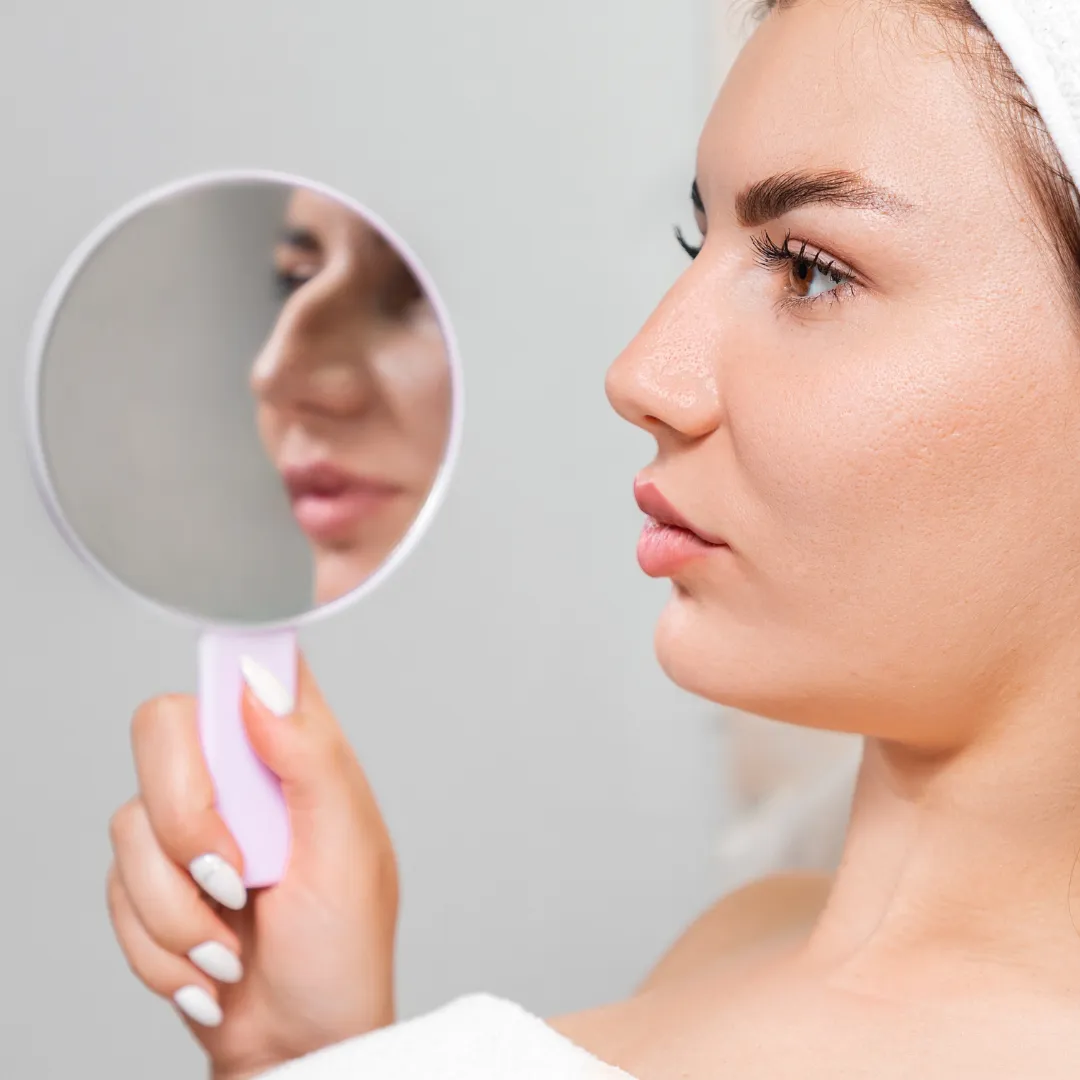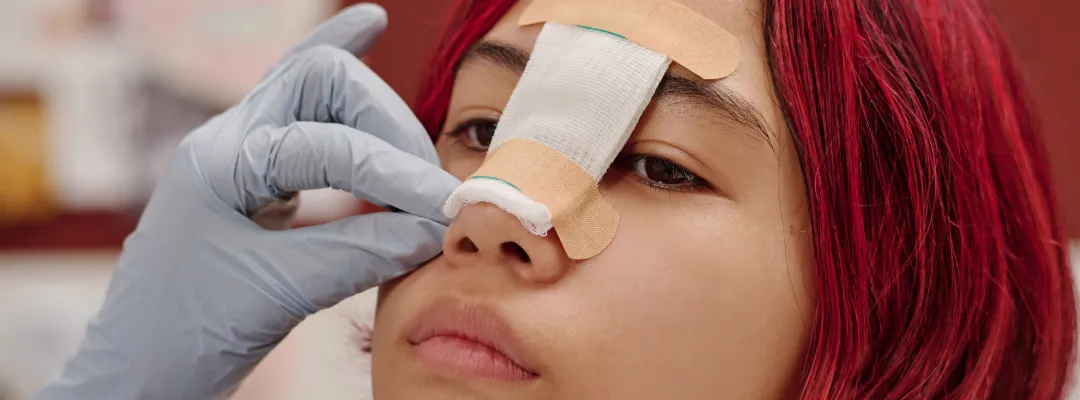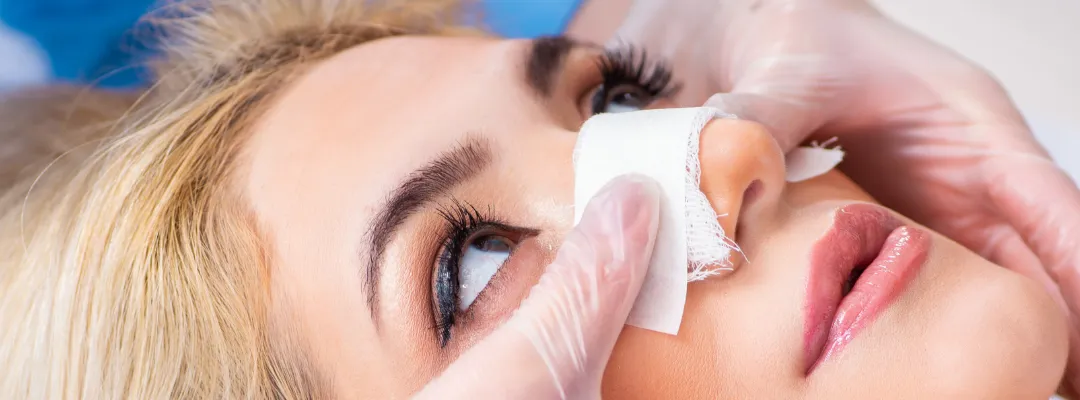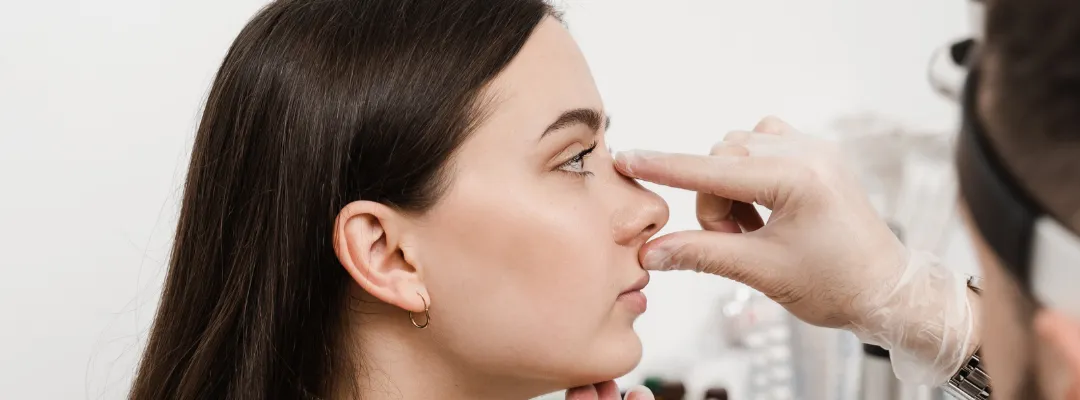How Long Does the Recovery Process Take After Rhinoplasty

The Ultimate Guide to Rhinoplasty: What to Expect
Rhinoplasty, also known as “nose surgery”, is one of the most popular facial plastic surgery procedures worldwide. By correcting the shape, size or structure of the nose, it offers significant changes to a person’s appearance. It also improves breathing function in some cases.
However, it is critical to choose a specialist doctor for natural-looking transformations. While the surgical procedure itself is very important, it is equally important to understand and guide the healing process. This article contains important information on what you can expect during your rhinoplasty recovery journey.
Week 1: Initial Recovery Period

The first week after your surgery can be challenging, but rest assured that it is temporary. During this time, you will probably experience some swelling, bruising and discomfort in your nose and eye area. Post-operative instructions will include getting plenty of rest, keeping your head elevated and avoiding any physical exertion. Blowing your nose is not recommended because it can negatively affect the healing process. It is therefore advisable to limit facial expressions that may put pressure on the surgical site.
Applying a cold compress to the area can help relieve discomfort and reduce swelling. After the procedure, medications prescribed by the specialist should be used regularly. This way, the pain will be less noticeable. Although most of the swelling occurs in the first 2-3 days, it gradually decreases over the week. The degree of bruising varies from person to person. Bruising usually begins to decrease towards the end of the first week. During this period, a supportive nasal splint is placed as the healing process of the newly shaped nose begins.
2-4. Weeks Decrease in Side Effects

In the following weeks, you will notice a significant reduction in swelling and bruising. During this period, the nasal splint is usually removed and the shape of your new nose can be seen. However, keep in mind that the final result is not yet certain as the nose will continue to develop in the coming months.
Patients whose occupations do not require heavy physical activity can return to work or school during this period. Strenuous activities, especially contact sports, should be avoided to prevent injury to the healing nose.
1-3. Months Continuous Improvement

Within the first three months after surgery, most of the swelling will have resolved and the shape of your nose will become more and more defined. You will begin to see the improved results of your procedure and start to notice your new look better.
Even at this stage, it is important to protect your nose. It is recommended to avoid direct exposure to sunlight, which can cause swelling or discoloration. Constant vigilance is also necessary to avoid any impact or pressure on your healing nose.
Months 6-12: Result

The healing process after rhinoplasty takes several months. By six months, the remaining swelling is largely gone and the shape of your nose is more defined. However, subtle changes may still occur up to one year after surgery.
After the one-year period is complete, you can see the final result of your rhinoplasty. The journey is complete and you have a nose that harmonizes with your other facial features and enhances your overall appearance.
What are the Psychological Effects of Rhinoplasty?
Although the physical aspects of rhinoplasty surgery are important, it is very important not to overlook the emotional aspect of this journey. The psychological effects of rhinoplasty surgery directly affect the healing process. Adjusting to a change in your appearance can be emotionally challenging. It is quite normal to experience an adjustment period as you get used to your new appearance. During this time, it can be very useful to get support from family, friends or a specialist.
What to Eat After Rhinoplasty?

After rhinoplasty surgery, eating can be started within a few hours. First, only liquid foods such as water and soup are consumed. Afterwards, soft foods are recommended. In the first week after surgery, it is important to avoid hard foods such as toast, tarts and bagels during the healing process.
Because the mouth and nose are close to each other, excessive movement and strain in the mouth can affect the nose and create tension. Since there is a risk of damage to the stitches and plaster, care should be taken not to damage the nose during this process.


